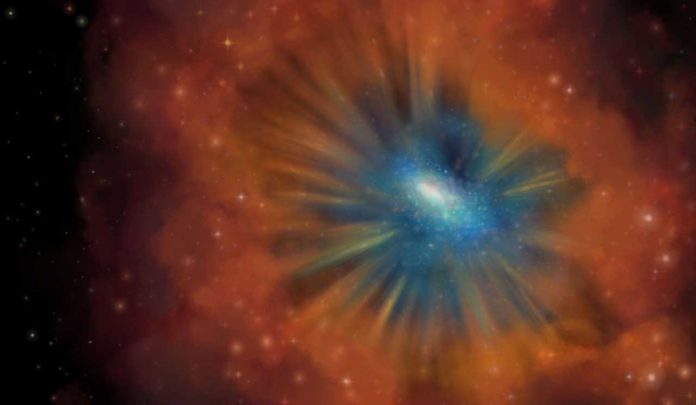A Cold quasar is a galaxy with a quasar at the center and abundant cold gas that can still produce new stars. Gas falling toward a quasar at the center of a galaxy forms an accretion disk that can produce a large amount of electromagnetic energy and luminosity hundreds of times greater than a typical galaxy.
Typically, the formation of a quasar signals the end of a galaxy’s ability to produce new stars.
In a new study, astronomers reported their discovery on a new type of cold quasars. The discovery is expected to change our comprehension of how galaxies mature.
Usually, it has been considered that the formation of quasars indicates the end of a galaxy’s ability to produce new stars. However, according to this new discovery, about 10% of galaxies hosting accreting supermassive black holes still had a supply of cold gas and made new stars even during the so-called “retirement” phase.
Scientists observed the quasars using X-ray emission and found a surprising amount of cold dust, more than was expected based on previous identification of quasars by their ultraviolet emission.
Co-author Meg Urry, the Israel Munson Professor of Physics and Astronomy, said, “The bottom line is when you look in X-rays or infrared light, you find dustier, more obscured active galactic nuclei (AGN) than you find in optical or ultraviolet surveys.”
Scientists noted, “The new finding may represent a brief phase of every galaxy’s lifecycle — akin to a retirement party — that was unknown until now. These galaxies are rare because they’re in a transition phase — we’ve caught them right before star formation in the galaxy is quenched and this transition period should be very short.”
The principal investigator is former YCAA Prize Postdoctoral Fellow Allison Kirkpatrick, who is now an assistant professor at the University of Kansas. The first author is Brandon Coleman from the University of Kansas. Additional co-authors include graduate student Tonima Ananna of Yale.
The research is part of a collaboration called the Accretion History of AGN, headed by Urry, that assembles archival data and carries out a multiwavelength analysis on it.
The discovery was announced June 12 at the annual meeting of the American Astronomical Society in St. Louis.
